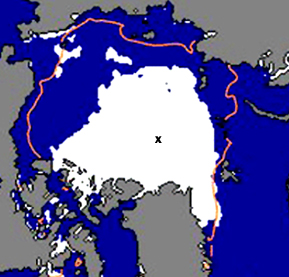I’m sharing my space this week with climatologist Paul Beckwith because an enormous cyclone blew over the North Pole all this month — an event that has kept scientists around the world up at night.
It’s very rare for there to be such a storm in the summer. In the past a storm like this would arise in winter and blow snow around on top of a thick ice cover. This summer, over thinner ice, the wind creates large waves which, combined with warm temperatures of air and water, are causing havoc with a keystone of the global climate.
Arctic ice physically reflects most of the incoming solar radiation harmlessly back into space, keeping the surface temperatures cold. When water replaces the melting ice it absorbs much, much more sunlight and thus increasingly heats up the ocean and atmosphere. This extra heat melts even more ice in a vicious heat amplifying feedback cycle.
No computer models predicted this and the implications of ice loss are enormous.
Models predicted the Arctic Ocean could be ice-free in 30 years but the observed changes now indicate it could happen in as little as two years (and no more than seven), or even by the end of September this year if there are a few more cyclones!
The situation is dire
What we are observing should be understood as our canary in the coal mine. What happens in the Arctic does not stay in the Arctic.
Greenland is also witnessing a devastating melt this year — larger than any in recorded history (and there are still 3 weeks left!). The magnitude of the melt will, unfortunately, substantially increase the predicted rate of sea level rise.
Antarctica is also seeing rapidly accelerating ice loss over the last decade — where warming ocean water is melting the ice from below. We have all seen the reports and pictures of large chunks of ice breaking off. Pressure cracks are now appearing in Antarctica where the ice is attached to the shore. The situation is dire.
It’s bad news folks! We are not just talking about just saving polar bear habit here. This is a BIG deal for all life on this planet. The temperature differential between the Pole and Equator drives the jet stream that drives weather across the planet. This year has already seen new records for temperature, droughts and flooding.
When the speed of climate change changes, the speed of our response must also change. We know what to do — will we allow our own lethargy and vested interest to stop us from doing it?
Note: I’m excited to announce that Paul Beckwith, a PhD student with the University of Ottawa laboratory for paleoclimatology and climatology, will launch a new Sierra Club Climate Blog in two weeks! So be sure to visit our website again soon and keep informed.
John Bennett, Executive Director
Sierra Club Canada
[email protected]
John on Twitter / Bennett Blog




